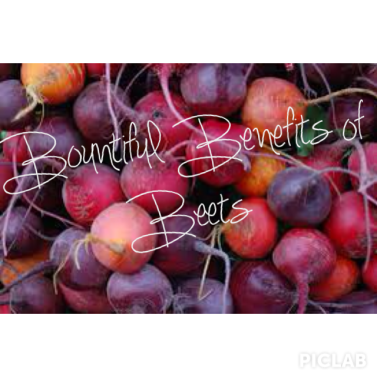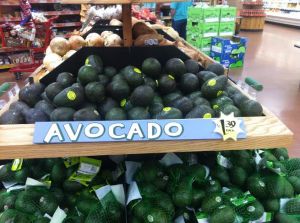 Beets are root vegetables with edible roots and greens. Beets are non-starchy vegetables, which mean they are made up of simple carbohydrates that digest easily. In general non-starchy vegetables have few carbohydrates than starchy vegetables (potatoes, corn, etc.) and more of their carbohydrates come from fiber. The beet bulb is a nutrient dense part of the vegetable that is high in: folate, fiber, potassium and magnesium as well as being a good source of vitamin C, B6, magnesium, and iron. Beet greens are rich in fiber, potassium, copper, calcium, iron, thiamine, riboflavin and vitamins A, C, K, E, and B6; they are also a good source of folate, niacin, zinc and phosphorous. Beets are obviously a nutrient powerhouse; however, if that isn’t reason enough to add them to your diet here are 5 other benefits of beets that are sure you convince you:
Beets are root vegetables with edible roots and greens. Beets are non-starchy vegetables, which mean they are made up of simple carbohydrates that digest easily. In general non-starchy vegetables have few carbohydrates than starchy vegetables (potatoes, corn, etc.) and more of their carbohydrates come from fiber. The beet bulb is a nutrient dense part of the vegetable that is high in: folate, fiber, potassium and magnesium as well as being a good source of vitamin C, B6, magnesium, and iron. Beet greens are rich in fiber, potassium, copper, calcium, iron, thiamine, riboflavin and vitamins A, C, K, E, and B6; they are also a good source of folate, niacin, zinc and phosphorous. Beets are obviously a nutrient powerhouse; however, if that isn’t reason enough to add them to your diet here are 5 other benefits of beets that are sure you convince you:
1. Natural Viagra – move over oysters, there’s a new aphrodisiac in town. One of the first known uses of beets was by the ancient Romans, who used them as a natural aphrodisiac, and it wasn’t a myth, beets have actually been found to contain high amounts of boron, which is directly related to the production of human sex hormones.
2. Hangover Cure – beets get their bright color from a pigment called beta cyanin, which may be the magic ingredient to get rid of a hangover. Beta cyanin increases the rate of liver detoxification, which helps your body excrete alcohol quicker than normal.
3. Mental Health Boost – beets contain betaine and tryptophan, substances that affect our brain. Betaine is a substance that is used in certain treatments of depression, and tryptophan relaxes the mind and creates a general happy feeling. So on a day that you’re down why not add beets to your diet?! It can’t hurt..
4. Cheap, cheap, cheap! – beets are one of the more inexpensive vegetables out there, and they are available year-round. A store-brand can of beets costs on average $0.60/can. They are a great, and inexpensive addition to any pantry!
5. High Source of Energy – beets are low in calories and high in sugar – up to 10% of the beet is sugar. But the sugar found in beets is released slower than sugar found in chocolate or other foods with added sugars, which gives a longer-lasting energy boost.
Ways to incorporate beets into your diet:
Breakfast: Sweet Beet Pancakes: http://www.ovenloveblog.com/sweet-beet-pancakes/
Lunch: Chickpea, Beet, Apple Panini: http://www.vegetariantimes.com/recipe/chickpea-beet-and-apple-panini/
Dinner: Beet Greens and Feta Pasta: http://www.chow.com/recipes/11402-beet-greens-and-feta-pasta
Snack: Beet and Butterbean Hummus: http://www.lovebeets.com/beet_recipes/detail.asp?ItemID=2087
Featured Recipe: Strawberry banana + beet smoothie
Ingredients: 1 cup frozen strawberries
1 medium sized banana
2-3 chopped beets
1 cup Greek yogurt
Handful of ice cubes (depends on how slushi-like or smooth you want your smoothie)
Directions: Combine ingredients in a blender, blend until smooth, and enjoy!






